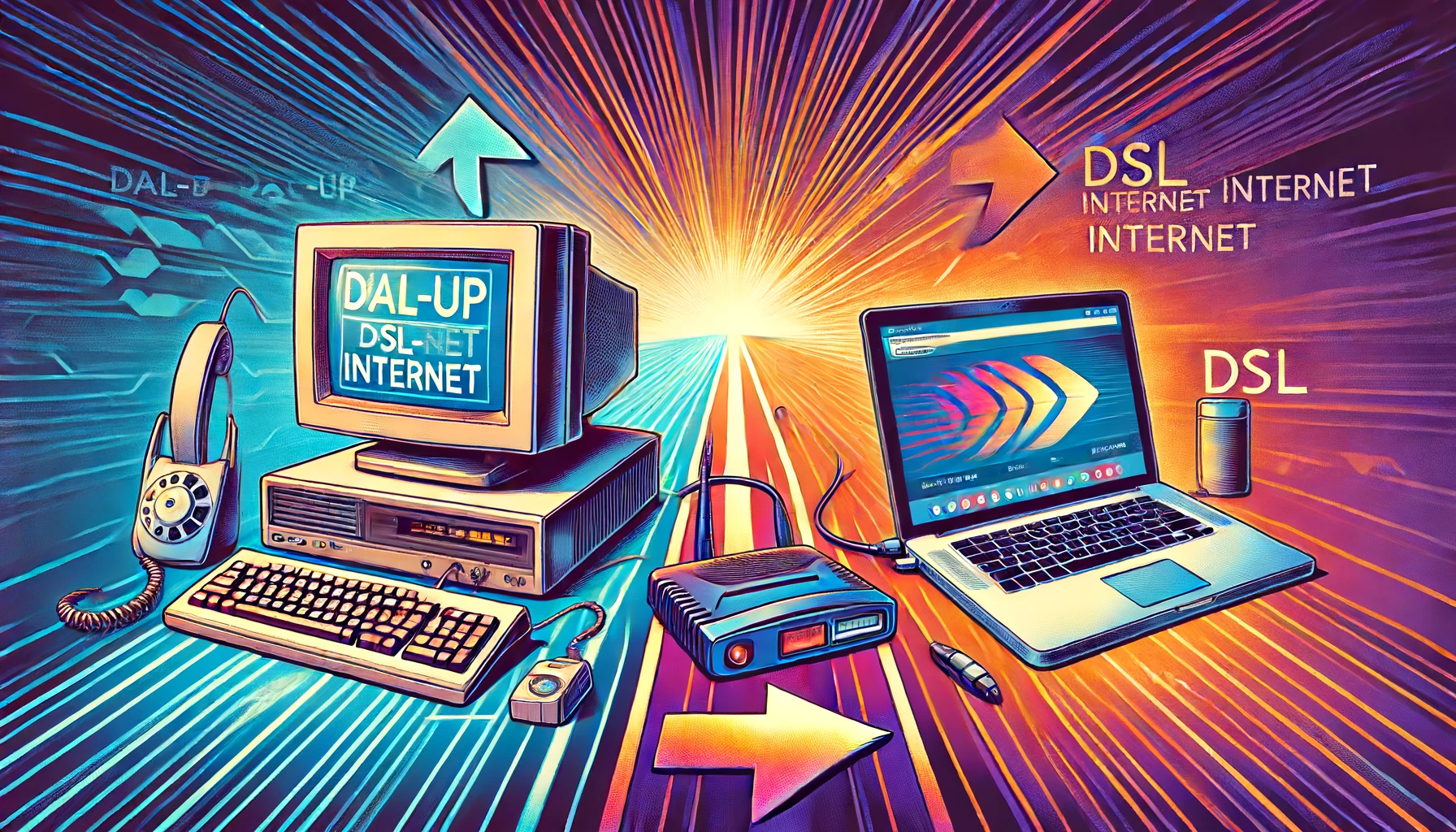Remember the days of dial-up internet? The iconic sound of the modem connecting, the slow page loads, and the inability to use the phone and internet simultaneously? If you’re still using dial-up or considering an upgrade, transitioning to DSL (Digital Subscriber Line) can be a game-changer. This blog post will guide you through everything you need to know about making the switch from dial-up to DSL.
Why Upgrade from Dial-Up to DSL?
The Speed Difference
One of the most compelling reasons to upgrade from dial-up to DSL is the significant increase in speed. Dial-up connections typically max out at around 56 kbps (kilobits per second), which is painfully slow by today’s standards. In contrast, DSL can offer speeds ranging from 256 kbps to over 100 Mbps (megabits per second), depending on the service plan and your location.
Always-On Connection
With dial-up, you have to dial in every time you want to use the internet, which can be time-consuming and inconvenient. DSL, on the other hand, provides an always-on connection. This means you can access the internet instantly, without the need to connect every time.
Simultaneous Internet and Phone Use
One of the most significant drawbacks of dial-up is that it ties up your phone line. With DSL, you can use the internet and make phone calls simultaneously, as DSL uses a different frequency band than voice calls.
How DSL Works
DSL technology transmits digital data over the traditional copper telephone lines. It does this by using a higher frequency band than what is used for voice calls, allowing data and voice to travel simultaneously without interference.
Types of DSL
There are several types of DSL services, including:
- ADSL (Asymmetric Digital Subscriber Line): Most common for residential users, offering higher download speeds than upload speeds.
- SDSL (Symmetric Digital Subscriber Line): Provides equal download and upload speeds, ideal for businesses.
- VDSL (Very High Bitrate Digital Subscriber Line): Offers faster speeds over shorter distances, suitable for those closer to the provider’s central office.
Setting Up DSL
What You Need
To set up a DSL connection, you’ll need a few essential components:
- DSL Modem/Router: This device connects to your phone line and provides internet access to your devices.
- Phone Filters: These are used to prevent interference between the DSL signal and your phone calls.
- ISP Subscription: You’ll need to choose a plan from an Internet Service Provider (ISP) that offers DSL service.
Installation Process
- Choose an ISP: Research and select an ISP that provides DSL service in your area.
- Order a Plan: Choose a plan that fits your speed and budget requirements.
- Receive Equipment: The ISP will typically send you the necessary equipment, including the modem and phone filters.
- Install Filters: Place the filters on all phone jacks in use to prevent interference.
- Connect Modem: Plug the modem into a phone jack and connect it to your computer or router.
- Configure Settings: Follow the ISP’s instructions to configure the modem settings and connect to the internet.
Benefits of Upgrading to DSL
Enhanced Browsing Experience
With faster speeds, you can browse the internet more efficiently. Websites load quickly, and you can stream videos without buffering.
Improved Work Efficiency
For those working from home, DSL offers a reliable connection that can handle video conferencing, large file uploads, and other work-related tasks.
Better Entertainment Options
DSL allows for smooth streaming of movies and music, online gaming, and other entertainment activities that require a stable and fast internet connection.
Choosing the Right DSL Plan
When upgrading from dial-up to DSL, selecting the right plan is crucial. Look for a plan that offers the speed you need at a price you can afford. Consider factors like download and upload speeds, data caps, and contract terms. A good DSL plan can transform your internet experience, providing a reliable and fast connection for all your online activities.
Common Concerns and Solutions
Distance from the Central Office
DSL performance can degrade with distance from the provider’s central office. If you’re far from the office, you might not get the top speeds advertised. Consider contacting your ISP to get an estimate of the speeds you can expect at your location.
Interference Issues
Although rare, interference from other electronic devices can affect DSL performance. Ensure that your modem is placed away from other electronics, and use high-quality phone filters to mitigate this issue.
Cost Considerations
While DSL is generally more expensive than dial-up, the benefits far outweigh the costs. Look for promotional offers from ISPs, bundle deals with other services, or negotiate for a better rate to make the switch more affordable.
Tips for a Smooth Transition
- Test Your Connection: Before canceling your dial-up service, ensure that your DSL connection is stable and working correctly.
- Backup Important Data: Although switching internet services shouldn’t affect your data, it’s always good practice to back up important files.
- Educate Household Members: Ensure that everyone in your household knows how to use the new DSL connection and understands any new equipment.
Conclusion
Upgrading from dial-up to DSL is a smart move that can significantly enhance your internet experience. With faster speeds, an always-on connection, and the ability to use the internet and phone simultaneously, DSL is a significant improvement over dial-up. By understanding the setup process, choosing the right plan, and addressing common concerns, you can make a smooth transition to DSL and enjoy the benefits of a modern internet connection.
Additional Resources
For more information on upgrading your internet connection and choosing the right DSL plan, check out these resources:
By upgrading to DSL, you’re not just improving your internet speed; you’re enhancing your overall digital lifestyle. Say goodbye to the limitations of dial-up and embrace the future of fast, reliable internet with DSL.


Leave a Reply